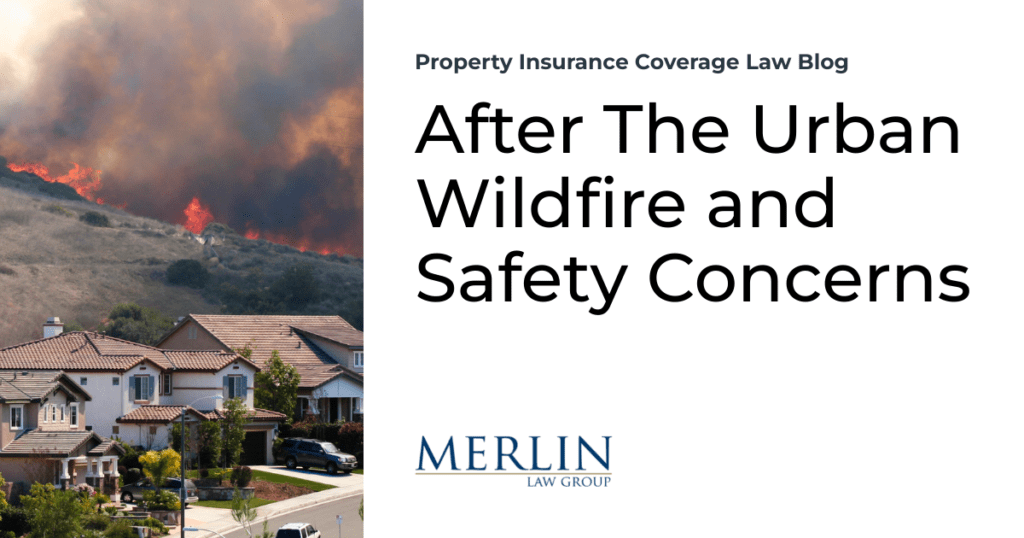After The Urban Wildfire and Safety Concerns

A pamphlet, Are Our Schools Safe After the Marshall Fire, caught my attention. The bottom line is that smoke damage caused by urban wildfires is much more dangerous than conventional wildfires. The parents of school children in the vicinity of the Colorado Marshall Fire are correctly raising concerns about the safety of schools impacted by toxic smoke damage.
The pamphlet had the following questions and answers about urban smoke damage:
1. If you can’t see it or smell it, it is safe. False. Every heard of carbon monoxide or radon? Many smoke particulates can only be seen with a microscope.
2. The Marshall Fire was a wildfire. False. This was an urban wildfire where things like cars, fertilizers, solar panels, batteries, cleaning products burned releasing things like sulfur dioxide, formaldehyde, dioxins, benzene, lead, and arsenic into the environment.
3. There was already ash, soot, and char in our schools from other wildfires. True. There were likely already smoke particulates in the school from other wildfires. However, those particulates would have a different chemical composition from the toxic particulates from the Marshall Fire.
4. If something is closed tightly, fire particulates cannot get in. False. We have lab data that shows char was found inside a sealed Sterilite storage bin.
5. Smoke damage can cause short- and long-term health. True. Exposure to these chemicals can increase risk of cancer, cause respiratory illnesses, increase the risk of heart disease, and impact neurological development. Children under the age of 18 are one of the high-risk populations.
6. HEPA vacuuming and the wiping of surfaces removes all ash, soot and char. Maybe. It is possible this can remove all fire particulates. However, it is also possible that particulates embed into things (e.g. walls, carpet, couches) which cannot be cleaned.
7. You can tell if you have smoke damage. False. Sometimes you can clearly see ash, soot, and/or char and know there is smoke damage. However, often you cannot see the microscopic particulates. It can look safe but be toxic. It also doesn’t take a lot to contaminate a home.
8. Public buildings are built differently than homes and therefore can not get smoke damage. False. While public buildings are built differently than residential homes, they are not immune to smoke damage. Look at Avista Hospital’s remediation efforts for proof.
9. Anything can be cleaned. False. Data shows fire particulates cannot be removed from all things. The walls in many homes had to be encapsulated and repainted and many had to throw away couches, curtains, rugs, stuffed animals, bean bags, books, games, puzzles as these could not be cleaned.
10. It is impossible to remove all ash, soot, and char. False. While it is difficult to remove all ash, soot, and char, it is possible and important to do in order to ensure the health and safety of a building’s occupants…. Many homes had 0% ash, soot, char before families moved back in.
The bottom line is that urban wildfires are different than rural wildfires. They are much more toxic. Since they are in urban areas, the smoke has a much greater impact on occupied structures. Without addressing and removing the toxic residue, long-term health and safety issues are threatened.
Teachers and children should be certain that their schools are safe. That is all these parents are calling for.
Thought For A Friday Afternoon
Someone is sitting in the shade today because someone planted a tree a long time ago.
—Warren Buffett


